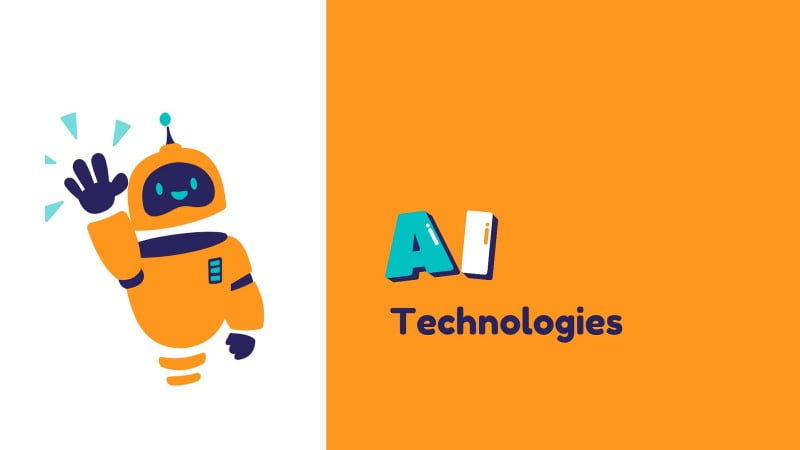In modern life, artificial intelligence (AI) has become a powerful force, breaking down the boundaries between the digital world and the real world. From the heights of creativity to everyday applications, AI has significantly changed the landscape of life and business. Since the term “artificial intelligence” was coined at the 1956 conference, the technology has undergone a dazzling journey, while bringing new opportunities for humanity.
This conference was the inspiration for a series of interdisciplinary developments in information technology. The advent of the internet has made the progress of artificial intelligence no longer a linear journey, but a real revolution, bringing AI closer to every corner of life.
In the present era, artificial intelligence technology not only exists as an independent technology for 30 years but also becomes the main driving force to change the way we work, educate, entertain, and even the way we interact with the world around us. This article will focus on discussing 12 of the latest artificial intelligence technologies, innovations that are shaping the future and opening up unexpected possibilities for the development of society and the global economy.

Natural Language Generation (NLG)
Natural language generation (NLG) is a rapidly growing technology that converts structured data into natural language. Computers are programmed with algorithms to automatically convert data into the desired format for users. This makes NLG an important part of artificial intelligence, supporting content creators to automate the creation and distribution of content in the desired format.
Content creators can leverage NLG to promote information on social media platforms and other media to reach their target audience effectively. It is important to note that the significant reduction of human intervention in the process of converting data into the desired format helps to improve efficiency and save time.
Not only does NLG help to generate text, but it also has the ability to display data in a variety of formats such as charts, graphs, helping to present information in a visually appealing and easy-to-understand way.
Automatic Speech Recognition (ASR)
Automatic speech recognition (ASR) is the process of using machine learning or artificial intelligence to automatically convert spoken words into readable text.
ASR has undergone rapid development in the recent decade, and is now widely used in many popular applications such as TikTok, Instagram, Spotify, and Zoom.
First appearing in 1952 with Bell Labs’ “Audrey,” ASR has seen particularly strong development since the use of deep learning in 2014, surpassing the accuracy limits of previous methods.
Virtual agent
Virtual agent technologies are a type of artificial intelligence (AI) program designed to interact with users and assist them in completing specific tasks or providing customer information. Virtual agents can be integrated into websites, mobile apps, and messaging platforms, providing services such as customer support, sales support, and scheduling appointments.
Virtual agents use natural language processing (NLP) and machine learning to understand and respond to user requests in a human-like way.
Machine Learning
Machine learning (ML), a branch of artificial intelligence (AI), focuses on building computer systems that can learn autonomously through data.
Machine learning algorithms are trained to detect relationships and patterns in data, from which they perform tasks such as prediction, classification, clustering, dimensionality reduction, and even generating new content.
Machine learning has widespread applications in a variety of fields, such as content recommendation, self-driving cars, healthcare, fraud detection, spam filtering, predictive maintenance, and business process automation.
According to the research report “2023 AI and Machine Learning” from Rackspace Technology, 72% of companies confirm that AI and ML are an important part of their IT and business strategy.
Deep Learning Platforms
Deep learning, a branch of artificial intelligence, uses artificial neural networks to enable computers to learn from examples in a way that is similar to humans. The term “deep” refers to the presence of hidden layers in the neural network. While conventional neural networks typically have 2-3 hidden layers, deep learning can have up to 150 hidden layers, creating a complex structure.
Deep learning is particularly effective on large datasets for training models, often using graphics processing units (GPUs) to accelerate the process. The algorithms in deep learning work hierarchically, automating the process of prediction and analysis.
Decision Management
Artificial intelligence (AI) plays an important role in the decision-making process by processing data, either in whole or in part, through AI platforms. This process helps to quantify data, make accurate predictions, and make decisions without human intervention.
In the modern world, organizations often adopt decision management systems (DMS) to convert and interpret data into predictive models. Enterprise-level applications use these systems to receive real-time information and perform business data analysis, supporting organizational decision-making.
AI is deployed widely in a variety of industries such as finance, healthcare, trading, insurance, e-commerce, and many others. This system brings efficiency and accuracy to organizational decision-making.
Biometrics
Biometric technology is a key area in artificial intelligence (AI) and security, with the goal of identifying and authenticating users based on their unique biometric features.
Although it may initially seem that biometric technology is simply a way to quickly unlock a mobile phone, its applications are not limited to this. This includes the use of biometric features to authenticate users in a variety of different fields.
The main goal of biometric security technology is to improve security by using parts of the body that are not easily duplicated. Biometric data, such as fingerprints, faces, and irises, are not easily identified or mimicked, helping to increase anti-fraud capabilities and protect user personal information.
Robotic Process Automation
Robotic process automation (RPA), also known as software robotics, is a sophisticated combination of automation and artificial intelligence to perform office tasks, such as data extraction, form filling, file movement, and many other tasks efficiently.
Through the use of APIs and user interface (UI) interaction, RPA helps to integrate and perform repetitive tasks between enterprise applications and productivity applications, simplifying workflows and improving performance.
RPA not only simulates human workflows but also automates a variety of activities and transactions across unrelated software systems, creating incredible flexibility and efficiency.
Image Recognition
Image recognition is the ability of a computer to identify and classify specific objects, places, people, text, and actions in digital images and videos.
Image recognition is an application of computer vision, and image recognition software works by analyzing and processing the content of an image or video and comparing it to learned data to “see” and understand automatically in a way similar to humans.
In the medical field, image recognition is used to identify tumors, diagnose broken bones, and identify other abnormalities, as well as in factories to detect defective products on assembly lines.
AI-Optimized Hardware
AI-optimized hardware plays a critical role in ensuring maximum speed and performance for AI tasks. The main components of AI hardware, including processors, GPUs, ASICs, and FPGAs, are specifically tuned and designed to enhance computational capabilities in the field of artificial intelligence.
The importance of AI-optimized hardware stems not only from improving the speed and efficiency of AI training and inference, but also from its ability to support real-time processing and improve the decision-making capabilities of AI systems. This enables the processing of large datasets, dealing with complex AI models, and achieving breakthroughs in a variety of AI applications.
AI-optimized hardware works by using specialized designs, circuits, and components to accelerate AI computations from the data input process, performing complex calculations, to the final output based on the predictions of the AI model.
Marketing Automation
Artificial intelligence (AI) is helping marketers automate marketing activities and campaigns at a scale that was previously unimaginable.
AI marketing is designed to automate essential tasks while enhancing user creativity, insights, and performance.
AI marketing tools are divided into many categories, including audience research, customer journey planning, idea generation and content research, keyword research, trend analysis, competitor monitoring, sales automation, social media management and advertising, and writing and content creation.
Content Creation
Although AI content creation tools cannot replace excellent writers, they can help reduce time for strategic content creation tasks.
Some prominent AI Content Creation tools include:
- ChatGPT is a natural language processing chatbot that is well-suited for creating ideas, suggesting article outlines, and suggesting social media content.
- Dall-E and Midjourney are AI-powered graphic creation tools, while Heyday is an AI-powered chatbot that supports sales.
- Canva, although not formally AI-powered, has a Magic Design feature that uses artificial intelligence to create relevant design templates.
Conclusion
Artificial intelligence (AI) technology has not only transformed the way we interact with computers but has also changed the way we work, educate, entertain, and even manage businesses.
With its rapid pace of development and widespread integration into many aspects of life, AI technology is not just a trend but also a powerful driver of innovation and global social progress. We are witnessing the dawn of a new and promising future where the power of machines and human creativity merge to create endless digital breakthroughs.
Table Of Content


